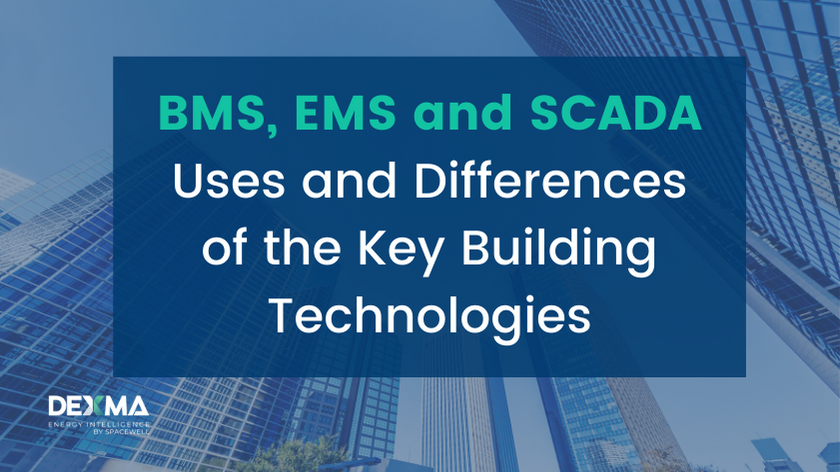Technology is transforming the way we use buildings, and the impact they have on our environment. There’s a long list of tech tools available now in the market to improve your building’s performance.
This could make it complicated for the energy manager to understand who’s who in this market, and what building technology you can apply to each area of your building to improve its overall performance.
Let’s make things really clear today: let’s talk about what building technology is all about.
Tech Is Transforming Buildings: are you in or are you out?
Buildings are energy guzzlers, responsible for more than 40% of global energy use and 1/3 of global greenhouse gases (GHG) emissions. In financial terms, energy represents the third highest expense for a business. So whether your primary interest is saving money, protecting the environment or meeting regulations, I think we can all agree on one thing – we need to improve energy efficiency in our buildings.
Here’s where technology comes in.
New technologies and the Internet of Things (IoT) are allowing greater flexibility, control and synergies in building management. Intelligent energy management systems improve efficiency and increase comfort for occupants.
Great, so we get that we have to be more energy efficient, we know there are solutions out there. But where to start?
It’s time to get clued up on the latest technologies so you can make informed decisions, and start being proactive about your building’s energy efficiency. In this article we’ll introduce the main building technologies, their uses and differences to help you understand more about them.
Who’s Who: Building Technologies on the Market for your Facility
Let’s do a quick review of the different building technologies and terminologies you may have come across.
What is a BMS?
BMS is short for Building Management System, sometimes referred to as Building Automation System (BAS) or Building Management and Control System (BMCS). It’s a computer-based system that controls and monitors building’s systems and services such as lighting, heating, ventilation and air-conditioning (HVAC), security and fire alarms.
What is a SCADA?
A brand of car? A 50s music genre..? Not quite…
SCADA stands for Supervisory Control and Data Acquisition. As the name suggests it’s a system for monitoring, controlling and analysing processes using data. SCADA are used in a huge list of industrial, infrastructure and facility processes e.g. power generation, water treatment, waste control, the chemical industry, telecommunications.
What is an EMS?
An EMS is an Energy Management System. It monitors, controls and optimises energy use. Using hardware to gather energy consumption data, and software to read and analyse this data, it gives a picture of a building’s energy use and highlights areas to improve efficiencies. With increasingly intelligent systems, EMS are advancing towards greater control and optimisation of energy in buildings.
What do BMS, EMS and SCADA have in common?
They are all parallel systems based on the same concept: automating processes using computer-aided systems, and both hardware and software components. This makes things possible that would be out of scope using humans alone, improving efficiencies, reducing workload and the risk of human error. However, humans are still an essential part of the process. Where human meets machine is called the HMI.
A Human-Machine Interface (HMI) is a device which presents processed data to a human operator to analyse, for instance a user interface that collects data, creates reports, sends notifications, etc. The dashboard you see in the Spacewell Energy Platform is an example of a HMI.
What’s the difference between BMS, EMS and SCADA?
Where they differ is in their application, complexity and scale at which they are used.
BMS is focused exclusively on buildings – all kinds of buildings including schools, hospitals, offices, homes, retail buildings etc. It manages and connects the systems in these buildings through a central control.
EMS is used for energy management. So, its job is monitoring and controlling energy-related systems such as lighting, heating, air-conditioning. But anything beyond energy, like security systems, that’s the job of BMS.
EMS and BMS can be integrated to work together.
SCADA is the most complex of all, used in industrial processes and national infrastructures, and is therefore more robust, faster and generally more expensive to buy and operate than a BMS or EMS.
These systems can be integrated to suit different needs. In further articles we are getting into further detail about their integrations to help you decide which is right for you. If you want to find out more, why not signing up to receive updates from our blog? You can also contact us for more information.




